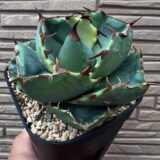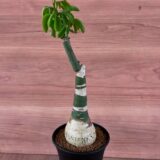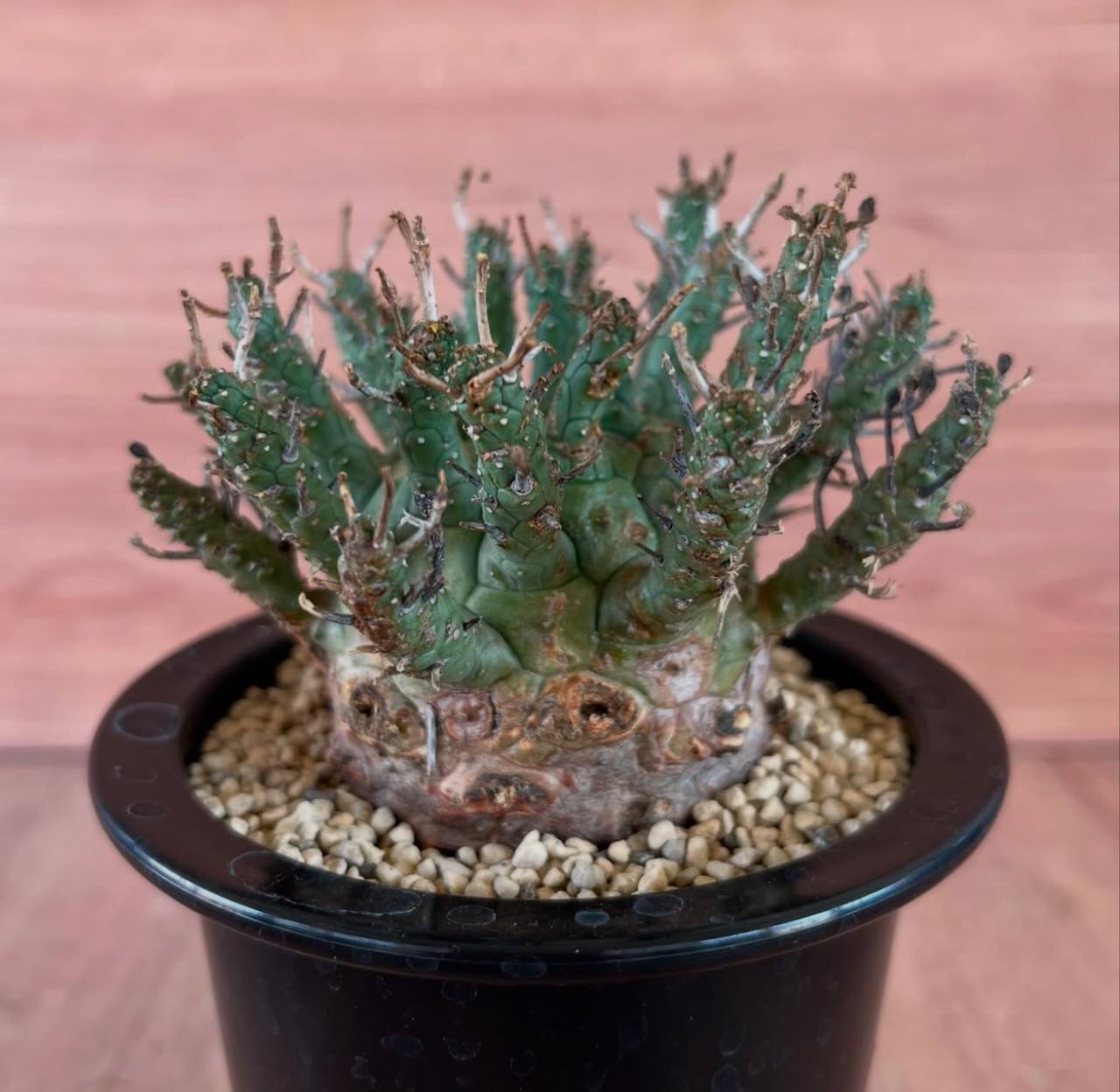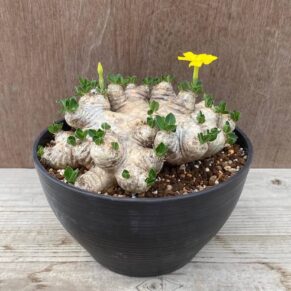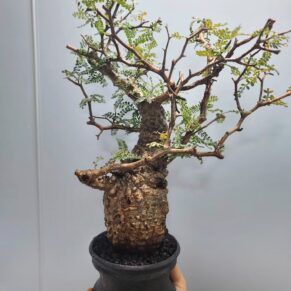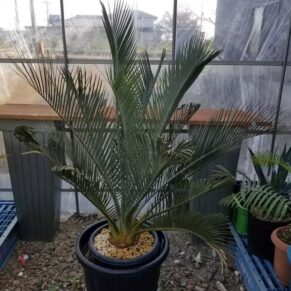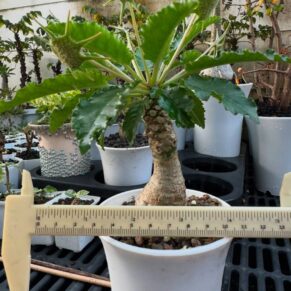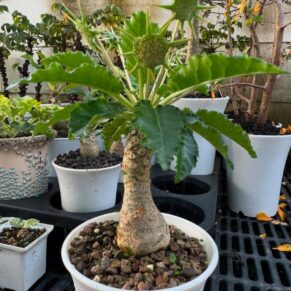- Your cart is empty
- Continue shopping
Shop
Euphorbia Decepta
$100.00
Shop for Euphorbia Decepta, a unique and striking plant for your garden or collection. Find healthy, vibrant specimens today!
Availability:27 in stock
Euphorbia Decepta
Euphorbia decepta: A Comprehensive Guide to Understanding This Unique Succulent
Euphorbia decepta is a fascinating succulent species that belongs to the Euphorbiaceae family. Known for its striking appearance and unique growing habits, it has become a popular choice among plant enthusiasts, especially for xeriscaping, ornamental gardening, and succulent collections. Join our face book FB.Native to Southern Africa, particularly the arid regions, Euphorbia decepta thrives in harsh environments, making it a symbol of resilience and adaptability in the plant kingdom. In this article, we will explore everything there is to know about Euphorbia decepta, including its botanical characteristics, cultivation, medicinal uses, and more.Order euphorbia decepta at
The Botanical Characteristics of Euphorbia decepta

Euphorb decepta is a spiny, cactus-like plant that can grow up to 60 cm tall and is known for its intriguing shape. The plant’s stems are typically cylindrical, thick, and covered with spines, making it resemble a small cactus. Its greenish-grey to blue-grey color gives it a cool, almost metallic look, which adds to its ornamental appeal. The stems are often segmented, and the plant has a low-growing, sprawling habit that makes it perfect for ground cover in xeriscaping.Purchase euphorbia decepta and other plants at:caudexshop
The leaves of Euphorb decepta are small and inconspicuous, typically less than 1 cm long, and they fall off as the plant matures. Its most striking feature is its small, yellow-green flowers, which appear in clusters during the spring months. These flowers are typical of the Euphorbia genus, with a small, cyathium structure that holds the individual flowers. While not showy like some other plants, the flowers of Euphorbia decepta contribute to its overall charm and make it an interesting addition to any garden or collection.
Cultivating Euphorbia decepta in Your Garden
One of the key reasons Euphorb decepta has gained popularity among gardeners is its adaptability and minimal maintenance requirements. As a drought-tolerant succulent, it is well-suited for dry, arid climates where water conservation is important. It thrives in well-draining soils, making it ideal for sandy, gravelly, or rocky garden beds. Due to its low water needs, it is commonly used in xeriscaping, a landscaping technique that reduces water usage by incorporating drought-resistant plants.
When planting Euphorb decepta, it’s essential to place it in an area with plenty of sunlight. The plant thrives in full sun and can tolerate extreme heat. However, it is crucial to protect it from frost, as it is not cold-hardy and can suffer damage when exposed to freezing temperatures. To encourage healthy growth, ensure that the plant receives well-draining soil, as it does not tolerate standing water, which could cause root rot.
Propagating Euphorbia decepta: A Guide to Successful Reproduction
Propagation of Euphorb decepta can be done through stem cuttings, a method commonly used with many succulents. To propagate the plant, carefully cut a healthy stem from the main plant using a sterile knife or scissors. Allow the cutting to dry out for a few days to prevent rot and to let the cut end form a callus. Once the cutting has dried, plant it in a small pot filled with a well-draining cactus mix or succulent soil. Ensure the soil is kept slightly moist until roots begin to form, which typically takes a few weeks.
While Euphorbia decepta can be grown from seed, it is a slower method and often less reliable than cuttings. If you choose to grow from seed, sow the seeds in a shallow container with well-draining soil and keep them warm and slightly moist. Germination can take a few weeks to a few months, depending on the conditions.Order caudexplants here;caudex
The Medicinal and Toxic Properties of Euphorbia decepta

Like many plants in the Euphorbia genus, Euphorb decepta contains a milky latex that can be toxic if ingested or if it comes into contact with the skin in large quantities. This sap can cause skin irritation, rashes, or even blisters, so it’s important to handle the plant with care. Wearing gloves is recommended when pruning or touching the plant to avoid any skin contact with the sap.
While Euphorb decepta is not typically used in traditional medicine, many species within the Euphorbia family have been researched for their medicinal properties. Some Euphorbia species are known to have anti-inflammatory, antimicrobial, and even anticancer properties. However, given the toxicity of the sap, it is crucial to exercise caution and never ingest any part of the plant.
Euphorbia decepta’s Role in Xeriscaping and Drought-Tolerant Gardens
One of the main reasons Euphorb decepta is so highly regarded is its suitability for xeriscaping. Xeriscaping is a landscaping method that uses drought-tolerant plants to create beautiful gardens that require minimal water. Euphorbia decepta is a perfect fit for this purpose due to its ability to thrive in dry conditions and its striking appearance.
When used in xeriscaping, Euphorbia decepta can be combined with other drought-tolerant plants like agaves, aloes, and sedums to create a visually appealing, water-efficient garden. Its unique shape and color can also be used to create focal points in the landscape, providing contrast to other plants.
Pests and Diseases Affecting Euphorbia decepta
While Euphorb decepta is generally resistant to many pests and diseases, it can still be susceptible to a few common problems. The most frequent pests that may affect Euphorb decepta are mealybugs and aphids. These insects can be controlled by regularly inspecting the plant and using insecticidal soap or neem oil.
Another potential problem is root rot, which can occur if the plant is overwatered or planted in poorly-draining soil. To prevent root rot, ensure that the plant is given plenty of space to grow and that the soil is well-draining. Additionally, make sure that the plant is not watered too frequently, as this can lead to waterlogged soil and increase the risk of fungal infections.
The Importance of Euphorbia decepta in Its Native Habitat
In its native environment, Euphorb decepta plays a vital role in the local ecosystem. The plant is adapted to survive in harsh, arid conditions, where water is scarce, and the climate is extreme. By storing water in its thick stems, Euphorb decepta can survive long periods of drought, helping to stabilize the local ecosystem.
In its natural habitat, Euphorb decepta also provides shelter and food for a variety of wildlife, including insects and small mammals. The plant’s flowers attract pollinators, such as bees and butterflies, which help ensure the reproduction of the species and contribute to the overall health of the local ecosystem.
Euphorbia decepta as an Ornamental Plant
Beyond its ecological significance, Euphorb decepta is a highly desirable ornamental plant. Its unique appearance and low-maintenance growing requirements make it a popular choice for gardeners looking for interesting, drought-tolerant plants. The plant’s unusual shape and color make it stand out in succulent arrangements, rock gardens, and container gardens.Buy euphorbia decepta here:euphorbiashop
Euphorbia decepta pairs well with other succulents and cacti, creating a striking contrast in texture and form. Its ability to thrive in low-water conditions also makes it a perfect plant for gardeners in regions that experience periodic droughts or have water restrictions.
The Conservation Status of Euphorbia decepta
Currently, Euphorb decepta is not listed as endangered or threatened, but like many succulent species, it faces challenges due to habitat loss and the illegal plant trade. The plant’s native regions in Southern Africa are subject to urban development and agricultural expansion, which may threaten the natural habitats of Euphorb decepta. Conservation efforts are crucial to ensuring that this unique plant species is preserved for future generations.
Furthermore, sustainable gardening practices and responsible sourcing of plants can help reduce the demand for wild-collected specimens, ensuring that Euphorb decepta remains abundant in its natural habitat. By supporting ethical horticultural practices, gardeners can contribute to the conservation of this stunning species.

Conclusion: Why Euphorbia decepta Should Be in Your Garden
In conclusion, Euphorb decepta is a remarkable plant that offers both aesthetic beauty and functional benefits. With its striking appearance, resilience to drought, and minimal maintenance requirements, it is an excellent addition to xeriscaped gardens, succulent collections, and ornamental landscapes. While it requires careful handling due to its toxic sap, its many benefits far outweigh the precautions.
Whether you’re a seasoned gardener or a beginner, incorporating Euphorb decepta into your garden can bring unique visual appeal while promoting water conservation and environmental sustainability. As we continue to face challenges related to water scarcity and climate change, Euphorb decepta serves as a reminder of nature’s adaptability and the importance of preserving our planet’s diverse plant species.Shop euphorbia and other caudexplants at:plantshop

